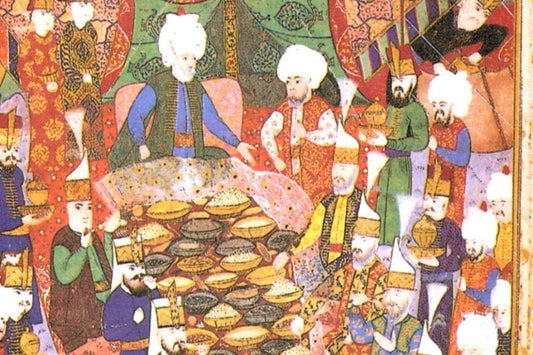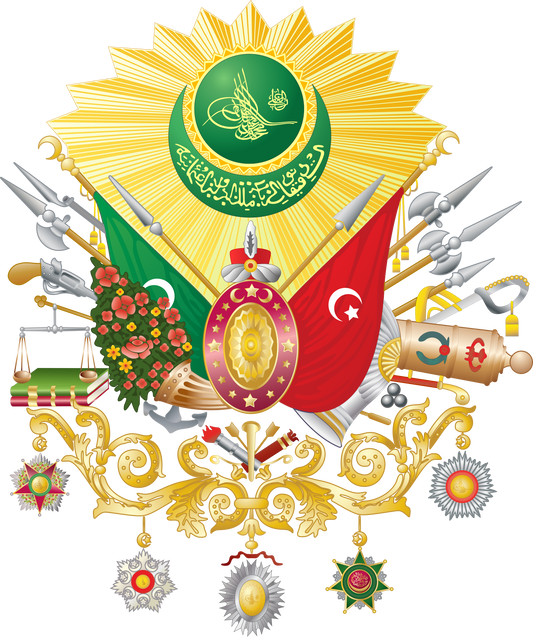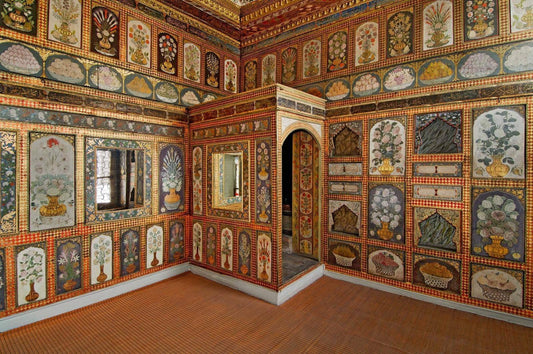Throughout art history, floral motifs have been important decorative elements carrying aesthetic and symbolic meanings in various civilizations. The lotus motif, one of these, has a deep-rooted history stretching from ancient Egyptian art to Ottoman ornamentation. Considered a symbol of rebirth and eternal life, the lotus, along with the palmette motif, has been incorporated into many artistic disciplines over time. It has been uniquely crafted in many cultures, including Mesopotamian decorative arts, Assyrian art, Hellenistic art, and Islamic art. Its use extends from architectural ornamentation and tile decoration to Ottoman art and European decorative arts. In this article, we will explore the historical journey of lotus and palmette motifs.
The Lotus Motif and Its Origin
The lotus flower is notable for its petals that open on the surface of the water. Opening at sunrise and closing at night, this flower was considered a symbol of rebirth and eternal life in ancient Egyptian art. Egyptians depicted the god Nefertum with the lotus flower and adorned temples, palaces, and tombs with the lotus motif. It was frequently used alongside the papyrus plant in everyday objects, religious ceremonial objects, and wall paintings.
Palmette Motif and Its Spread
The lotus motif, which spread from Egypt to Mesopotamia and Phoenicia, was often used in conjunction with the palmette. The palmette, with its broad leaves, resembles a fan and is considered a stylized version of the lotus or date palm. It is frequently seen in palace decorations within Mesopotamian decorative art and in architectural friezes among Assyrian art motifs.
The Anthemion Pattern and Its Place in Art
Lotus and palmette motifs combined to form the decorative style known as the anthemion. This motif became a significant decorative element in Assyrian and Hellenistic art. The motifs, connected by S-curves, created an elegant and rhythmic appearance. These patterns are frequently seen on Attic vases, temple decorations, and tombstones.
Use in Islamic Art
After the Hellenistic period, lotus and palmette motifs also found a place in Islamic art. During the Abbasid period, these motifs returned to Syria and Egypt, becoming an important part of art. In the 9th century, lotus and palmette motifs were widely used in Samarra decorations and were reshaped in different interpretations in Seljuk and Andalusian art.
Use in Ottoman Architecture
Lotus and palmette motifs were used in Ottoman art, from architectural decorations to tile decoration. These motifs are frequently encountered in mosque stonework, tile patterns, and manuscripts. In the 16th century, İznik tile motifs, combined with lotus and palmette patterns and Rumi motifs, created a unique aesthetic for Ottoman art.
Reuse in European Art
Lotus and palmette motifs regained popularity in Europe in the 18th and 19th centuries. They became prominent decorative elements in Neoclassical architecture and Renaissance art. These motifs became important designs for interior decoration and architectural ornamentation.
The Journey of Lotus and Palmetto in Art
Lotus and palmette motifs, which hold a significant place in art history, have been decorative elements carrying aesthetic and symbolic meanings across various civilizations. These motifs, widely used from Ancient Egypt to Mesopotamia, from the Hellenistic period to Islamic art and Ottoman architecture, reveal the universality of art. These patterns, which took on a distinctive form in the Ottoman Empire with Iznik tile motifs, gained a prominent place in stonework, manuscripts, and architectural ornamentation. Today, these classic motifs continue to inspire the world of art and decoration. Click here to discover exclusive tile designs that embody the elegance of lotus and palmette motifs.




